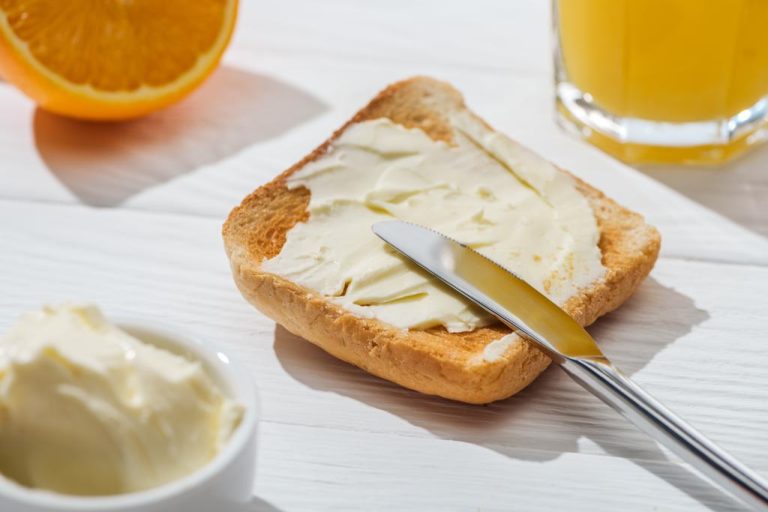What is behind saturated and unsaturated fatty acids? We will show you briefly and concisely where they are contained, what is better and what effect the fatty acids have on your body.
Difference between saturated and unsaturated fatty acids
Fat is important for our body – along with proteins and carbohydrates, it is one of the basic nutrients. Every fat contains saturated and unsaturated fatty acids.
Fat isn’t clearly healthy or unhealthy – it depends on how much you’re eating and where it’s coming from. Unsaturated fatty acids are healthier. But saturated fats also have their place and don’t always have to be bad in moderation.
Which fatty acids are contained in which and what do they do?
Saturated fatty acids are mainly found in hydrogenated edible fats (e.g. margarine, palm fat, all animal fats, coconut fat) and in most finished products. You can tell they’re firm (or spreadable) at room temperature. Saturated fats provide a lot of energy.
Unsaturated fatty acids are mainly found in vegetable oils and are very sensitive to heat, which is why you should not use olive oil for frying, for example. Unsaturated fatty acids are divided into monounsaturated and polyunsaturated fatty acids. The monounsaturated fatty acids help build the cell membrane, polyunsaturated (also called essential fatty acids) are important for the development of the body. You can find them in meat, grains and potatoes, but also in vegetable oils, nuts, fish and avocados.
Saturated vs. Unsaturated Fats: How Much is Healthy?
Society for Nutrition (DGE) recommends that no more than seven to ten percent of the total energy intake should consist of saturated fatty acids. Too many such fats can increase cholesterol and blood pressure. This, in turn, often leads to heart disease and obesity.
Monounsaturated fatty acids, on the other hand, have a positive effect on fat metabolism. Polyunsaturated fatty acids even lower cholesterol levels.
In the production of edible fat such as butter or margarine, but also if you heat fats too much, trans fats can be formed from unsaturated fatty acids. These also increase the “bad” LDL cholesterol level and lower the “good” HDL cholesterol level.
The Federal Office for Risk Assessment (BfR) recommends no more than one percent trans fatty acids for a healthy diet – however, trans fats are contained in many processed foods. They are currently not subject to declaration in Germany, so you cannot tell from the packaging whether a product contains them. For example, avoid them by cutting out fried foods, shortening, margarine, and baked goods made with them.
Coconut oil consists almost exclusively of saturated fatty acids, but is not harmful – provided it is “virgin coconut oil”.
Attention: Coconut products have been transported a long way and the cultivation is often not very sustainable either: In order to meet the increasing demand, coconuts are often grown in monocultures and treated with pesticides.
Summary: Which is better?
Even if fat is generally discredited, it is important and very healthy in moderation – it all depends on which fat you eat.
Saturated fats are found in many foods, especially processed ones. It therefore makes sense to avoid such products as far as possible. If possible, switch to unsaturated fatty acids in vegetable oils.

